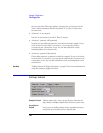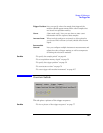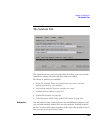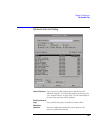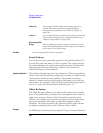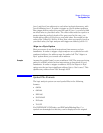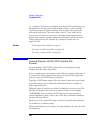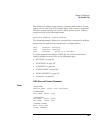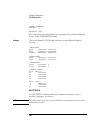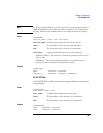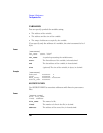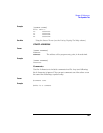
162
Chapter 3: Reference
The Symbols Tab
Offset By Lets you add an offset value to the starting point of a
symbol. This can be useful when compensating for
microprocessor prefetches (see “Offset By Option” on
page 162).
Align to Lets you mask the lower order bits of a symbol's value. This
can be useful for triggering on odd byte boundaries (see
“Align to x Byte Option” on page 163).
Beginning/End/
Range When a symbol represents a range of addresses, you can
choose the beginning address of the range, the end address
of the range, or the whole range.
See Also “To enter symbolic label values” on page 99
Search Pattern
Use this field to locate particular symbols in the symbol databases. To
use this field, enter the name of a file or symbol. The system searches
the symbol database for symbols that match this name. Symbols that
match appear in the list of Matching Symbols. You can also use
wildcard characters to find symbols.
Asterisk wildcard (*)
The asterisk wildcard represents "any characters." When you perform a
search on the symbol database using just the asterisk, you will see a list
of all symbols contained in the database. The asterisk can also be
added to a search word to find all symbols that begin or end with the
same letters. For example, to find all of the symbols that begin with the
letters "st", select the Search Pattern field and enter "st*".
Offset By Option
The Offset By option allows you to add an offset value to the starting
point of the symbol that you want to use. You might do this in order to
trigger on a point in a function that is beyond the preamble of the
function, or to trigger on a point that is past the prefetch depth of the
processor. Setting an offset helps to avoid false triggers in these
situations. The offset specified in the Offset By field is applied before
the address masking is done by the "Align to x Byte" option.
Example
An 80386 processor has a prefetch depth of 16 bytes. Assume functions



